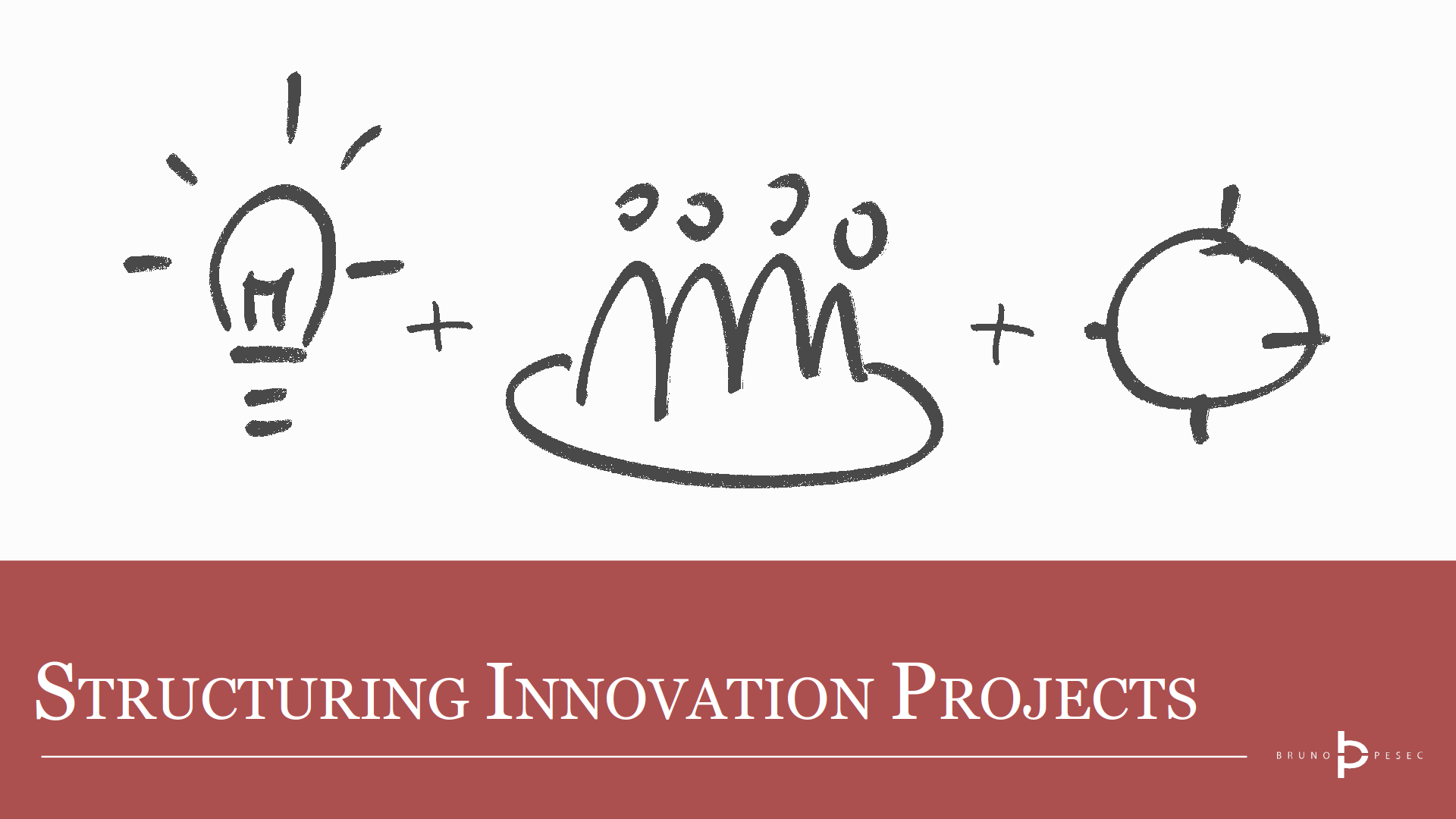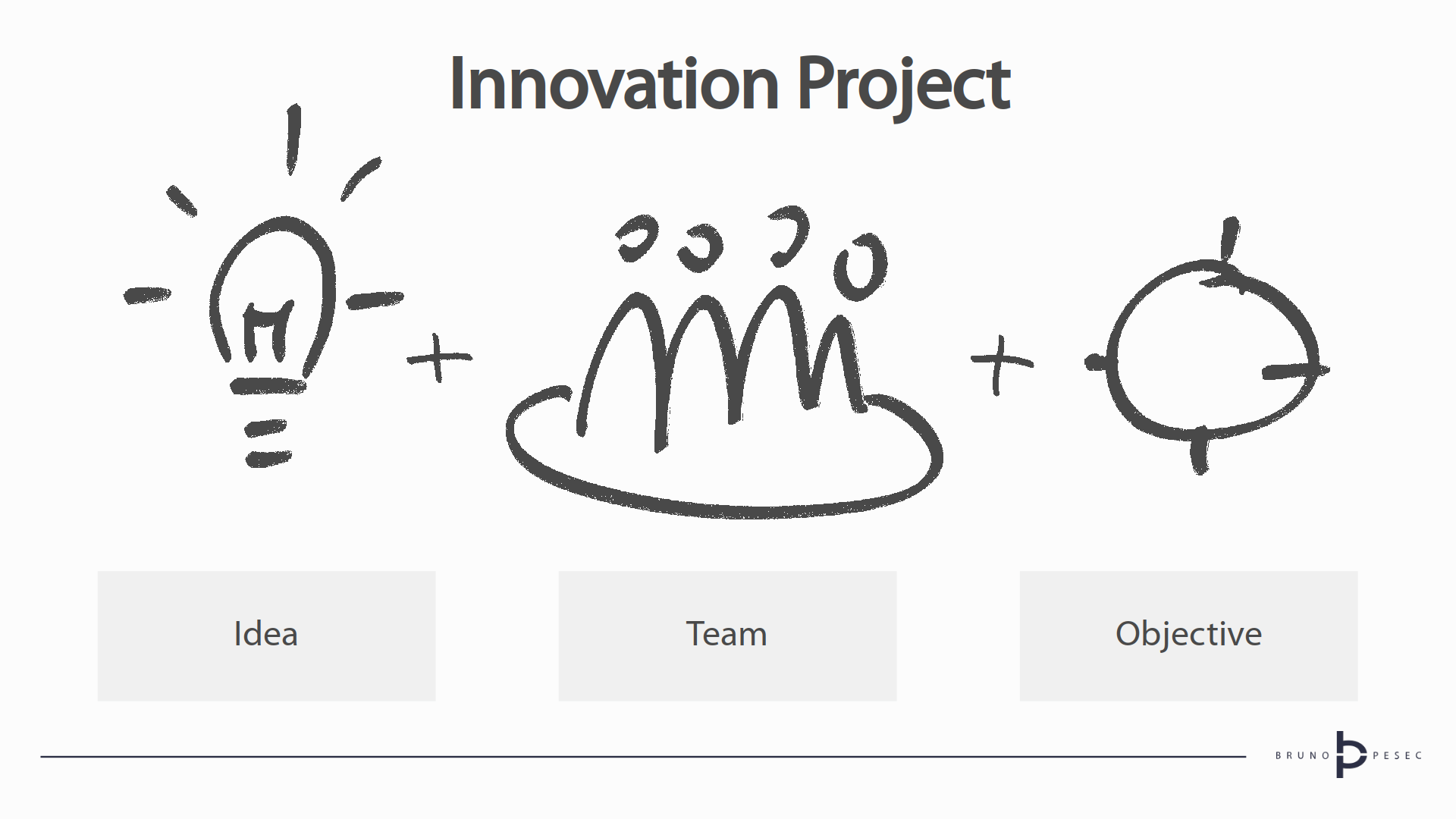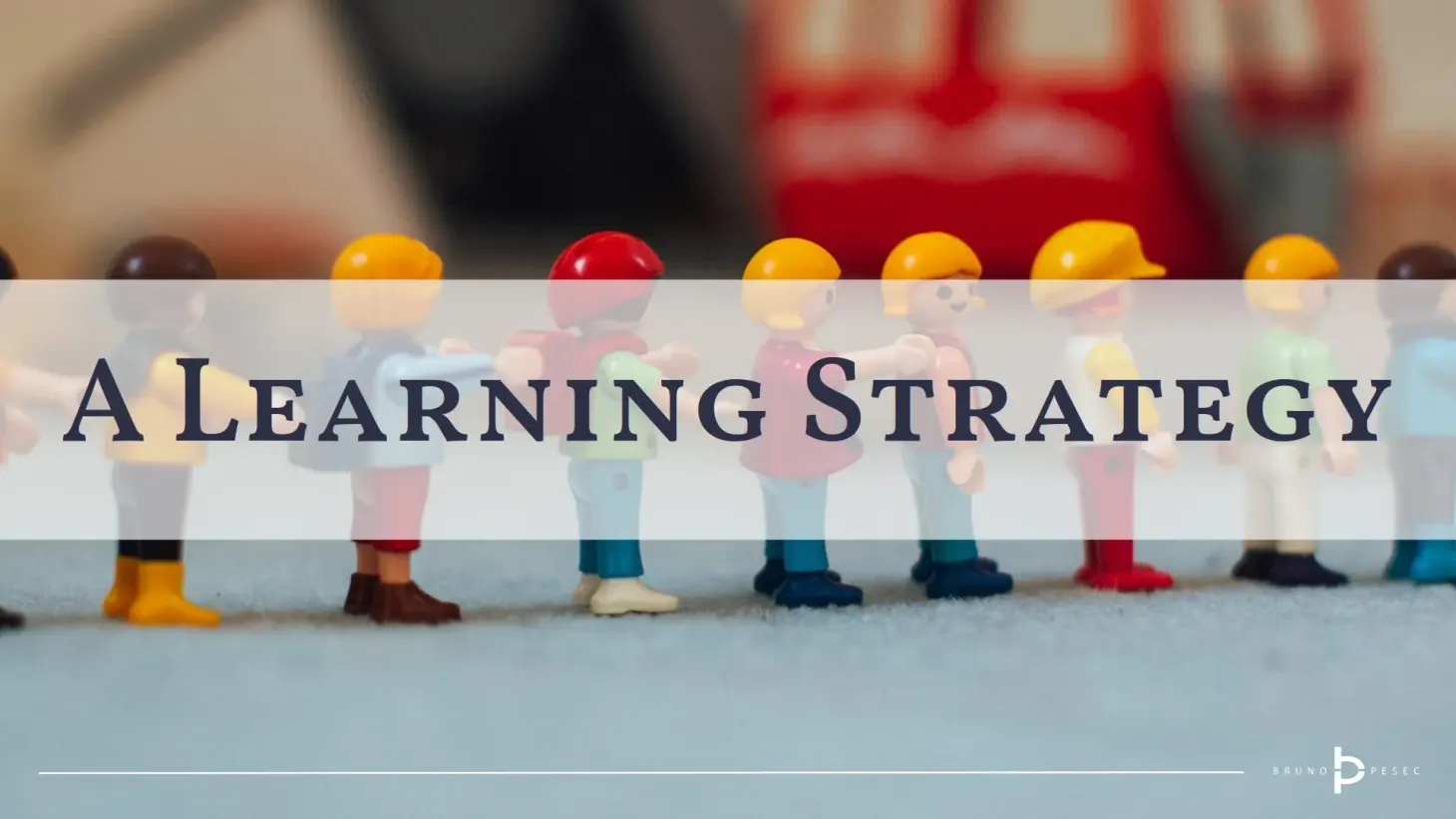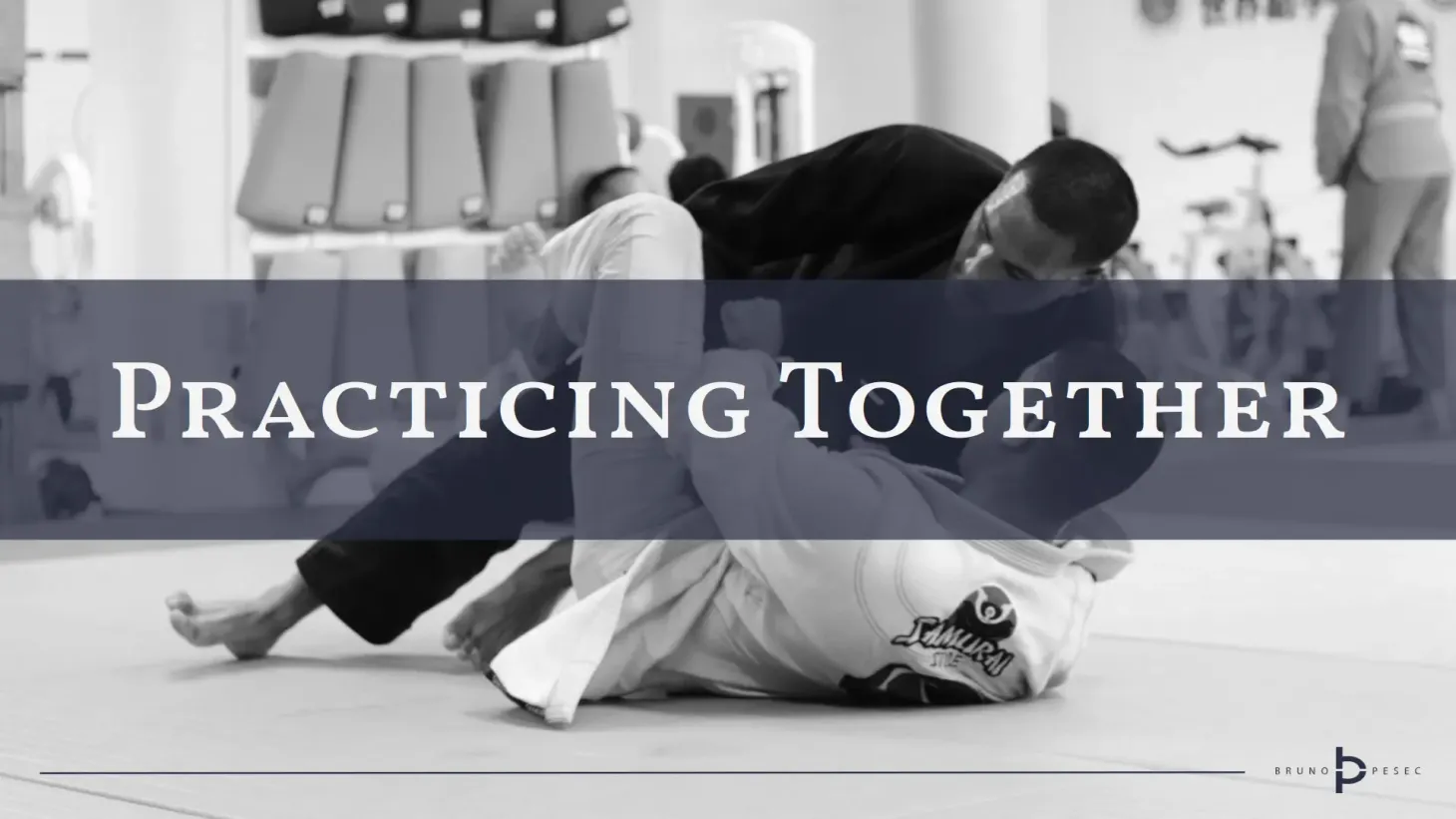Structuring innovation projects
Innovation Project = Idea + Team + Objective.

Ideas by themselves are worthless—after all, they don’t get implemented out of thin air. Teams with no clear objective can take an idea anywhere, which in most cases doesn’t work well in reality. We like to say that we are open to everything, but every organisation has its own context and boundaries.
When it comes to corporate innovation, I prefer to structure innovation projects as follows:
Innovation Project = Idea + Team + Objective

An Idea
Well documented idea encapsulates who is it for, what is it about, how it gets made, and how do involved parties—including you—benefit from it. For more on developing ideas I recommend:
You can use tools like the Business Model Canvas or Lean Canvas to capture an idea on a single page. The former is better for corporate teams, the latter is better for entrepreneurs. For more I recommend:
- The Business Model Canvas Explained
- What is the Right Fill Order for a Lean Canvas?
- Playing Lean business modelling training covers both canvases as well.
A Team
When it comes to innovative projects and entrepreneurial ventures, execution power matters a lot. No matter how great idea in question is, it’s nearly worthless if there is no one to bring it to life, and transform it from something intangible to a new venture or business model.
The most important person in the team is an idea owner, who has the strongest drive to develop the idea—at least initially—and take it to the next level. That person should be joined by at least two more, otherwise there is no team, and everything will drag on, dying a slow, slow death.
There are many teaming models out there, but for corporate teams I personally care most about:
- motivation and drive,
- business and industry acumen,
- propensity to learn,
- ability to cope with uncertainty, and
- willingness to change direction if evidence suggests so.
Be aware that people assigned to innovation projects should have more than 20% time allowance. If not, then this turns into 120%—their full time job plus innovation squeezed into any hole in their calendar.
An astute reader will notice that I haven't listed any skills in innovation methodologies. That's because they are best learned while doing, and team can be supported either by internal or external innovation coach.
An Objective
One of the key mechanisms to reducing the risk of corporate innovation initiatives is to match the funding to the maturity stage of the idea. In essence, instead of receiving a lump sum of money, the team will receive it in doses. That way you minimise financial risk, while maximising gain.
The objective should match the maturity stage. For example, if this idea has just been registered and them team is fresh, then a fair first objective is Investigate if this idea is worth pursuing. This objective would have to be accompanied by clarification what is it worth for your organisation. I suggest to cover it from revenue generating potential, cost reduction potential, customer satisfaction impact potential, and strategic potential.
Regarding maturity stages, you are free to come up with your system, just make sure that you are consistent and that you don't accidentally build a traditional stage-gate approach. As you experiment, you might find out that your idea is not as mature as you've thought. That means you should bring it back to lower level of maturity and reduce the funding until sufficient evidence is found that this is worth investing (further) in.
I've documented how to extended the conventional product life cycle model in order to address the biggest innovation risk. You can use that as an inspiration for your innovation maturity model.
This structure keeps it simple—and for a good reason.
Innovation is characterised with high uncertainty, so why add unnecessary bureaucratic burden to it? This is the workable minimum, which will allow the innovation team to move with speed, force, and purpose, while giving the management something tangible to measure and assess.
Bruno Unfiltered
Subscribe to get the latest posts delivered right to your inbox. No spam. Only Bruno.




